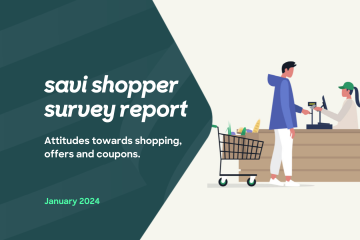FMCG brands are already at a disadvantage in the data marketing stakes. With their consumer relationships entirely intermediated by retailers, whether online or in store, opportunities to build first party data sets have always been limited. So they’ve relied heavily on third party data for tracking and analysing consumer behaviours and building consumer engagement.
Some advertisers are looking to technology fixes – like fingerprinting, subdomain delegation or local storage – to by-pass the constraints and carry on harvesting third party data. But they miss the fundamental point. Consumers want better privacy and data protection and regulators are going to oblige. One way or another, the game is up for the third party data trade.
So what to do?
FMCG brands need to offset the loss of third-party data by acquiring more of their own first-party or, even better, zero-party data.
This will not come as news to everyone. In their 2021 Consumer Engagement Report, Merkle found that of 800 marketing, analytics and technology executives at major US and UK companies surveyed, 88% identified collection and storage of first-party data as a high priority over the next year.
First-party data is generated by observing consumer behaviour within a brand’s own digital estate – website visits, social interactions, CRM data and so on. These behaviours reveal implied preferences that can, in aggregate, inform marketing strategies going forward.
Zero-party data is even better. This is data that a consumer proactively and deliberately shares with the brand about profile characteristics, preferences, purchasing intentions and so on. These data reveal explicit consumer preferences, enabling high levels of personalisation and engagement with priority consumers.
Quid pro quo
Unlike third-party data, which can be purchased without consumers even knowing it exists, first and zero party data needs to be earned, with active participation and consent of the consumer key to the process.
In their Annual Marketing Report, Nielsen found that:
“Brands of all sizes are primarily focused on data sources that highlight an action at the end of a customer journey, such as an actual purchase”
So while first-party data can be acquired by creating compelling digital experiences to encourage consumer interaction, zero-party data demands a tangible value exchange that recognises the consumer’s ownership of the data and rewards them for sharing it.
There are many ways to do this, but few are as effective as a good old fashioned financial incentive.
By creatively integrating discounts, cashbacks, rewards and special offers into the digital experience, brands can open up a wealth of new opportunities to engage directly with consumers, build trust and establish long-term relationships yielding rich, high-quality data.
Sales promotion is evolving from a tactical tool to an integrated strategic solution – helped along in no small part by our Intelligent Promotions Platform. First party data can be acquired through a simple one-off exchange of an email address for a downloadable discount coupon. Or a brand can integrate a cashback claim into the UX on its website, building a more sophisticated data capture tool into the engagement process to acquire more valuable zero party data.
One of our most successful programmes has been to integrate a dynamic digital coupon gallery into a brand’s website with hooks into its CRM, loyalty and marketing automation systems, using price incentives to drive an on-going exchange of information and value with consumers.
The end of the third party cookie might be Google’s response to “rising consumer expectations for privacy and rapidly evolving regulatory restrictions”. Or it may be an attempt to seize an even bigger share of the global online ad spend. Either way, brands will need to find new ways to understand and engage with consumers, leading to better outcomes for everyone.






